- Home
- David McCullough
The Pioneers
The Pioneers Read online
Thank you for downloading this Simon & Schuster ebook.
Get a FREE ebook when you join our mailing list. Plus, get updates on new releases, deals, recommended reads, and more from Simon & Schuster. Click below to sign up and see terms and conditions.
CLICK HERE TO SIGN UP
Already a subscriber? Provide your email again so we can register this ebook and send you more of what you like to read. You will continue to receive exclusive offers in your inbox.
CONTENTS
Epigraph
Part I
1787–1794
* * *
1. The Ohio Country
2. Forth to the Wilderness
3. Difficult Times
4. Havoc
Part II
1795–1814
* * *
5. A New Era Commences
6. The Burr Conspiracy
7. Adversities Aplenty
Part III
1815–1863
* * *
8. The Cause of Learning
9. The Travelers
10. Journey’s End
ACKNOWLEDGMENTS
ABOUT THE AUTHOR
NOTES
BIBLIOGRAPHY
INDEX
IMAGE CREDITS
For Rosalee
The character ought to be known of these bold pioneers. . . . From whence did they spring? . . . For what causes, under what circumstances, and for what objects were difficulties met and overcome?
—EPHRAIM CUTLER
PART I
1787–1794
CHAPTER ONE
The Ohio Country
The Ohio is the grand artery of that portion of America which lies beyond the mountains. . . . I consider therefore the settlement of the country watered by this great river as one of the greatest enterprises ever presented to man.
—J. HECTOR ST. JOHN DE CRÈVECOEUR, 1782
I.
Never before, as he knew, had any of his countrymen set off to accomplish anything like what he had agreed to undertake—a mission that, should he succeed, could change the course of history in innumerable ways and to the long-lasting benefit of countless Americans.
That he had had no prior experience in such a venture and was heading off alone in his own one-horse shay appears to have been of little concern. If he was as yet unknown to those with whom he would be dealing, he carried with him letters of introduction from the governor of Massachusetts, the president of Harvard College, and some forty others. The day of his departure was Sunday, June 24, 1787.
Manasseh Cutler was forty-five years old and pastor of the First Congregational Church of Ipswich Hamlet, a tiny Massachusetts village not far from the sea, thirty miles north of Boston. He had been born and raised on a hilltop farm in Killingly, Connecticut, and given the biblical name of Manasseh after the oldest son of Joseph. Like most New Englanders, he was a descendant of those strong-minded English Puritans who had landed in America in the seventeenth century and proliferated ever since. James Cutler, the first of the family to arrive, had fathered twelve children. The Reverend Cutler himself was one of five and the father of eight.
He had attended Yale College, with classmates mainly from New England among whom a biblical name such as he had was by no means uncommon. He was distinguished for “diligence and proficiency,” and finished with honors in 1765.
In less than a year he married Mary Balch of Dedham, Massachusetts, a small trim blonde said to have had a no less amiable disposition than he. Her father, the Reverend Thomas Balch, performed the wedding ceremony. When offered the chance to run a chandlery—a ship supply store—in Edgartown on the island of Martha’s Vineyard, bride and groom moved immediately to the island and there remained for three years, time enough for two sons, Ephraim and Jervis, to be born, and for Manasseh to conclude that a mercantile life was not for him.
He resolved to enter the ministry under the tutelage of his father-in-law back in Dedham. His studies continued for nearly two years, during which he started preaching in one town or another. “Prosecuted my study,” he wrote in his diary. “Began to make sermons. May God grant me his blessing and assistance in so important an undertaking, and make me serviceable to the cause of religion, and the souls of my fellow men.”
He was offered the pulpit at Ipswich Hamlet. The day of his ordination, at age twenty-nine, the Meeting House was thronged so “exceedingly” that not more than half the people were able to attend.
A bit above average in height, stout but well-proportioned, the Reverend Cutler had a ruddy, healthy look, and dressed always in ministerial black—black velvet coat and breeches, black silk stockings. He would be described as a gentleman of “the old style, country type.” But stiff-necked and somber he was not, any more than were most Puritans, contrary to latter-day misconceptions. Puritans were as capable as any mortals of exuding an affable enjoyment of life, as was he. Like many a Puritan he loved good food, good wine, a good story, and good cheer. His black clerical attire, a professional requirement, by no means represented disapproval of bright colors in clothing or furniture or decoration. It was said he could out-talk anyone, and from numerous of his diary entries, it is obvious, too, that he had an eye for attractive women. But here again that was no violation of Puritan rules.
He had as well great love for his large family, his wife and children, and was ever attentive to their needs for as long as he lived.
In addition to all this, and importantly, Manasseh Cutler was endowed with boundless intellectual curiosity. It may be said he was a university unto himself, ranking high among the notable polymaths of the time, those “of great and varied excellence” who took an interest in nearly everything.
He had succeeded in becoming three doctors in one, having qualified for both a doctor of law and doctor of medicine, in addition to doctor of divinity, and having, from time to time, practiced both law and medicine. At one point he looked after some forty smallpox patients and seems to have gained a local reputation for his particular skill at coping with rattlesnake poisoning. He became an honorary member of the Massachusetts Medical Society, received a degree of Master of the Arts from Harvard, and was elected a member of the Academy of Arts and Sciences.
Further, to supplement his meager income as pastor—never more than $450 a year—he had added a third floor to the rectory and established his own private boarding school where the students were “prepared for usefulness in the world.”
Most remarkable were his continuing scientific pursuits. He was at once an avid astronomer, meteorologist, and naturalist. Over the years, his modest income notwithstanding, he had acquired his own barometer, thermometer, telescope, spyglasses, and celestial globe, and was particularly esteemed among fellow scientists for his work in botany, and for having written the first-ever treatise on the classification of the flora of New England—a study of some 350 separate species. His knowledge of botany was probably surpassed by few if any Americans of his generation.
Year after year he carried on extensive correspondence with leading figures in all the sciences on both sides of the Atlantic. One letter concerning his studies of the aurora borealis, written in 1778 to Ezra Stiles, the president of Yale, went on for twenty-four pages.
Between times he studied French. Indeed, he seems to have been studying something nearly every waking hour. “Engaged in the study of botany,” reads one diary entry. “This morning endeavored to observe the eclipse of the moon,” reads another. “Studied,” “studied hard,” “studied very hard,” he recorded one day after another.
Once, with a half dozen others, he climbed the highest peak in the White Mountains of New Hampshire, carrying a heavy barometer on his back in the spirit of wanting to bring back new knowledge—to compute the elevation at t
he summit, which he recorded to be 9,000 feet. That either he or the barometer had overestimated the height by some 2,600 feet did not in the least deter his zest for learning.
On the day of his departure on his unprecedented new mission, he brought with him the cabinet necessary for saving botanical specimens collected along the way.
He had a favorite quotation from Virgil that to his family seemed the key to his character, “Felix, qui potuit rerum cognoscere causas”—“Fortunate is he who understands the cause of things.”
The year before, on the morning of March 1, 1786, the Reverend Cutler and ten others gathered in Boston at the famous Bunch of Grapes tavern, at the corner of King and Kilby Streets. Their purpose was to launch a highly ambitious plan involving the immense reach of unsettled wilderness known as the Northwest Territory. They were a group of veteran officers in the Continental Army, as Cutler was considered also, having served six months during the Revolutionary War as an army chaplain.
At the peace treaty ending the war, signed in Paris in 1783, the American diplomats John Adams and John Jay had insisted that all the lands controlled by the British west of the Allegheny Mountains and northwest of the Ohio River east of the Mississippi, be ceded to the new United States. The British commissioners persistently urged making the Ohio River the westernmost boundary of the United States, but John Adams, it is said, responded indignantly, “No! Rather than relinquish our claim to the western territory, I will go home and urge my countrymen to take up arms again and fight till they secure their rights, or shed the last drop of blood.” John Jay agreed and the British found it best to yield the point.
The land on the southern side of the Ohio was part of Virginia and already being rapidly settled according to the Virginia system, which allowed a man to take and mark for himself any unappropriated lands. By the New England system, so-called, the land lying north of the river was to be properly surveyed and sold, the establishment of settlements done by legal process, and lands of the natives to remain theirs until purchased from them.
Until that point the United States government did not own a single acre of land. Now, all at once, almost unimaginably, it had acquired some 265,878 square miles of unbroken wilderness, thus doubling the size of the United States. It was an unsettled empire north and west of the Ohio River, bigger than all of France, with room enough for as many as five more states and included access to four of the five Great Lakes, one of which, Lake Michigan, reached to its very center.
And then there was the Ohio River, itself a great natural highway west, la Belle Rivière, as the early French explorer René-Robert Cavelier de La Salle had called it.
The new realm was spoken of as “the back country,” “the vast interior,” “the howling wilderness,” “the fair domain beyond the Ohio,” or simply “the Ohio country.” There were no roads as yet anywhere in all this wilderness, no bridges, no towns, churches, schools, stores, or wayside taverns. In New England there were more than a thousand towns, one about every five miles. But in all the immense territory to the northwest of the Ohio River, the territory from which five states were to emerge—Ohio, Indiana, Illinois, Michigan, and Wisconsin—there was as yet not one permanent legal settlement.
A few remote forts had been established and there were hunters, trappers, fur traders, and “squatters,” those who settled wherever they chose and without legal claim to the land.
Much, too, was reported of forests teeming with wolves, bears, wild boars, panthers, rattlesnakes, and the even more deadly copperheads. And, as every easterner knew, there was the “Indian menace,” the many native tribes who considered the Ohio country their rightful, God-granted domain. Much blood had already been shed in wilderness battles and atrocities committed by both natives and white men. These were realities well-known throughout the east and particularly on the minds of those gathered at the Bunch of Grapes.
Worst of all had been the infamous massacre by American militia of ninety-six peaceable Delaware Indians in central Ohio in 1782—Christian men, women, and children who knelt singing hymns as they were systematically clubbed to death, all because they were mistakenly thought to have had a part in the murder of a family of settlers. In revenge soon after, at Upper Sandusky, the Delawares stripped naked, tortured, cut off the ears, burned while still alive, and scalped a captured American officer, a friend of George Washington’s, Colonel William Crawford. Delaware justice demanded a life for a life be taken, but they would give an enemy an opportunity to die well and honor his family during ritual torture. Crawford’s dismemberment was also to insure that he would be a less formidable enemy in the next world. The story of Crawford’s fate, the ultimate frontier nightmare, was told over and over back east.
Only the year before the Bunch of Grapes meeting, one of the group, General Benjamin Tupper, as part of a government surveying party, had been turned back from entering the Ohio country so severe was Indian resistance to the encroaching settlers.
Then, too, there was also the immediate reality of serious, mounting troubles right at home. Unprecedented financial panic had gripped the new nation since the end of the Revolutionary War. The resources and credit of the government were exhausted. Money, in the form of scrip issued by the government, was nearly worthless. The scrip the veterans received as compensation for their service was worth no more than ten cents on the dollar. Trade was at a standstill. In Massachusetts the situation was worst of all. Farmers were being imprisoned for debt. Only a few months earlier an armed rebellion led by a poor Massachusetts farmer and war veteran named Daniel Shays had to be put down by a force of loyal militia commanded by General Tupper.
As it was, the severe economic depression that followed the war would last longer even than the war. But out west now there was land to be had as never imagined—vast land, rich land where there was “no end to the beauty and plenty”—that could be made available to veterans at a bargain price in compensation for their service. West was opportunity. West was the future.
“As time progressed, the New England Revolutionary officers and soldiers interested in western immigration became more and more impatient to realize their hopes,” as one settler was to write.
They were poorer than their neighbors who had not been in the field; and if they had more of pride, that was only natural from the lives they had led, and surely they had a right to feel proud of the services they had rendered. One who was among them, and a close observer, says that they had a better and more dignified bearing than before the war, dressed more handsomely, and were improved in manners and conversation. . . . These men it must be remembered did not receive money in pay for their fatigue, exposure and suffering, but final certificates in settlement.
“The spirit of immigration never ran higher with us than at this time,” Manasseh Cutler wrote to a member of the Congress, Nathan Dane, who happened also to be a Massachusetts neighbor.
The leading figure—the driving force—at the Bunch of Grapes gathering was a widely known hero of the Revolution and, in normal times, a farmer and surveyor, General Rufus Putnam. It was he who had called the meeting.
A commanding presence, he stood nearly six feet tall and spoke in a manner described as straightforward and impressive. One of his eyes had been disfigured by a childhood injury that “gave it an outward, oblique cast, leaving the expression of his face strongly impressed on the mind of the beholder.” In his portrait he is shown in profile, with the intention, no doubt, to hide the bad eye. As would be said:
He was not brilliant, he was not quick, but he was richly endowed with that best of gifts—good, sound, common sense, and he had, in unusual degree, that prescience that enabled him to skillfully adapt means to ends, so as thereby to accomplish what he wished. . . . His judgment was sound, he was patient and had great power of endurance. His integrity was never questioned.
He was also known to be full of jokes and loved to sing.
Most important to matters at hand, Rufus Putnam, before the end of the Revolution, had led 2
88 officers in signing what was known as the Newburgh Petition, whereby land bounties promised to veterans would be provided in the Ohio country in payment for their military services.
Then, at the war’s end, he had written a long letter to Washington about the possibilities represented by the Ohio country, knowing Washington as a young man had seen that wilderness firsthand on surveying expeditions and, further, that Washington owned land there. He was already an Ohio land speculator.
I am, sir [Putnam wrote], among those who consider the cession of so great a tract of territory to the United States . . . a very happy circumstance and of great consequence to the American empire.
Washington, though a Virginian to the core, had particularly high regard for the New Englanders who had served under his command. A great part of his military history had been made north of the Potomac, beginning in Boston.
Many there were in New England, Putnam assured him, waiting for the chance to head west as settlers, and there was “not the least doubt but other valuable citizens will follow their example.”
In a letter to Congress, Washington strongly supported the idea, but in a subsequent letter to Putnam he wrote, “. . . matters, as far as they have come to my knowledge, remain in statu quo.”
In 1784 Putnam wrote again to Washington to assure him settlement of the Ohio country still “engrosses many of my thoughts, and much of my time,” and that as soon as Congress made provisions for granting land there, thousands from New England would emigrate. Meanwhile, however, many were “growing quite impatient, and the general inquiry now is, when are we going to the Ohio?” It was being called “Ohio Fever.” Putnam preferred to call it “the Ohio cause.”
In 1784 an ordinance for the government of the Northwest Territory had been drawn up by several members of Congress including Thomas Jefferson. It proposed, “That after the year 1800 . . . there shall be neither slavery nor involuntary servitude in any of the said States. . . .” The ordinance passed but without any slavery restrictions, and without them as would be said, it was “a dead letter.”

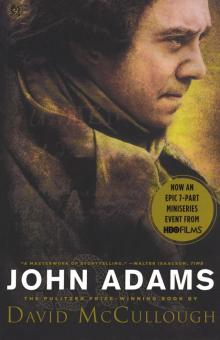 John Adams
John Adams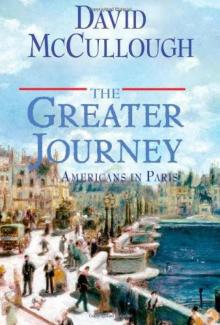 The Greater Journey: Americans in Paris
The Greater Journey: Americans in Paris 1776
1776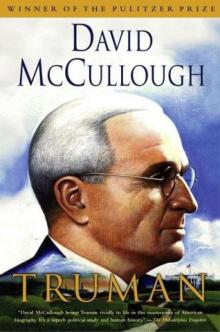 Truman
Truman The Pioneers
The Pioneers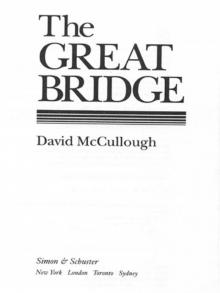 The Great Bridge: The Epic Story of the Building of the Brooklyn Bridge
The Great Bridge: The Epic Story of the Building of the Brooklyn Bridge The American Spirit
The American Spirit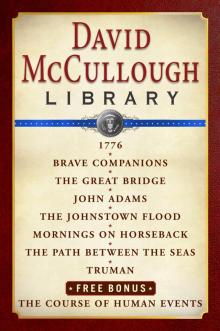 David McCullough Library E-book Box Set
David McCullough Library E-book Box Set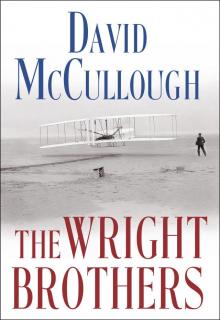 The Wright Brothers
The Wright Brothers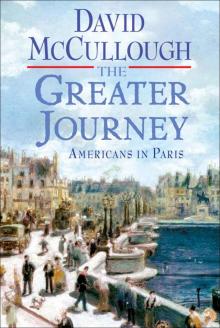 The Greater Journey
The Greater Journey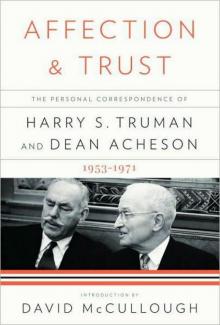 Affection and Trust: The Personal Correspondence of Harry S. Truman and Dean Acheson, 1953-1971
Affection and Trust: The Personal Correspondence of Harry S. Truman and Dean Acheson, 1953-1971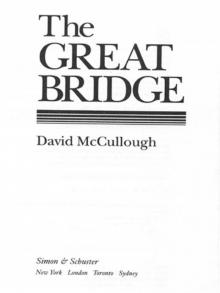 The Great Bridge
The Great Bridge